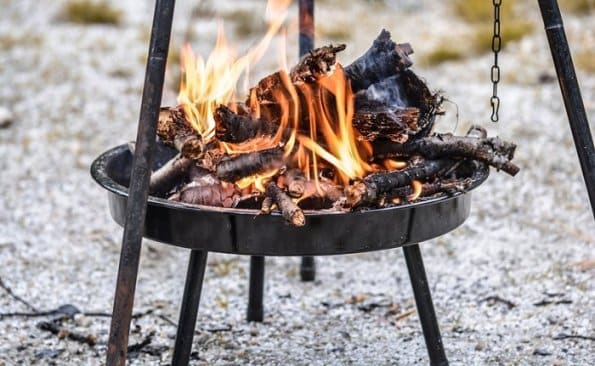As winter approaches, there’s nothing quite like the comforting warmth and mesmerising crackle of a fire to make those chilly evenings cosy and inviting. With this in mind, outdoor wood burners have soared in popularity in recent years.
However, enjoying your wood fire safely and efficiently throughout the winter requires some preparation. In this article, we’ll provide tips on how to get your garden wood fire ready for the chilly winter months.

The benefits of using wood fire at home
Before we delve into the steps for preparing your garden wood fire, let’s first explore why so many homeowners opt for this timeless source of heat and ambiance.
- Cost-effective heating: One of the primary benefits of using a wood fire is its cost-effectiveness. Many of us are more aware of energy costs than ever before. Firewood is often more affordable than other heating sources, making it an economical choice for those looking to keep warm without breaking the bank.
- Environmental friendliness: Wood is a renewable resource, and when harvested responsibly, burning it releases fewer greenhouse gases compared to fossil fuels.
- Aesthetic appeal: There’s a certain charm and rustic beauty associated with a wood-burning fire. The flickering flames and the earthy scent of burning wood create a warm and inviting atmosphere that can’t be replicated by other heating methods.
It’s important that you check if it’s ok to burn firewood in your local area. There are some places, for example in busy urban areas, where there are regulations in place.
5 ways to prep and manage firewood
Here are the steps to prep your wood before you burn it:
- Inspect: Start by inspecting your firewood supply. Make sure it’s seasoned, meaning it has been dried for at least six months. If you prepped in the spring using wood cutting tools to arrange your supply, you’re more likely to have well-seasoned wood ready to go. This type of wood burns hotter, produces less creosote buildup, and minimises the risk of chimney fires.
- Clean: Before lighting your first fire of the season, clean out the fire pit or fireplace. Remove ashes, debris, and any obstructions in the chimney or flue. This not only improves the efficiency of your fire but also reduces the risk of chimney fires.
- Check: Examine the fire pit or fireplace for any signs of damage or wear. Repair or replace any cracked bricks, broken mortar, or damaged components to ensure safety and longevity.
- Stock up: Ensure you have an ample supply of firewood to last you through the winter. Store it in a dry, well-ventilated area, ideally covered to protect it from rain and snow. Consider stacking it off the ground on pallets or a firewood rack to prevent moisture absorption.
- Keep safe: Safety should always be a top priority. Invest in fire-resistant gloves, a fire extinguisher, and a spark screen to prevent embers from escaping the fire pit. Additionally, make sure you have a safe way to extinguish the fire completely when you’re done enjoying it.
A garden wood fire can be a warming, atmospheric addition to your winter experience. To make the most of this cosy, cost-effective heat source, take the time to prepare your wood fire properly.

